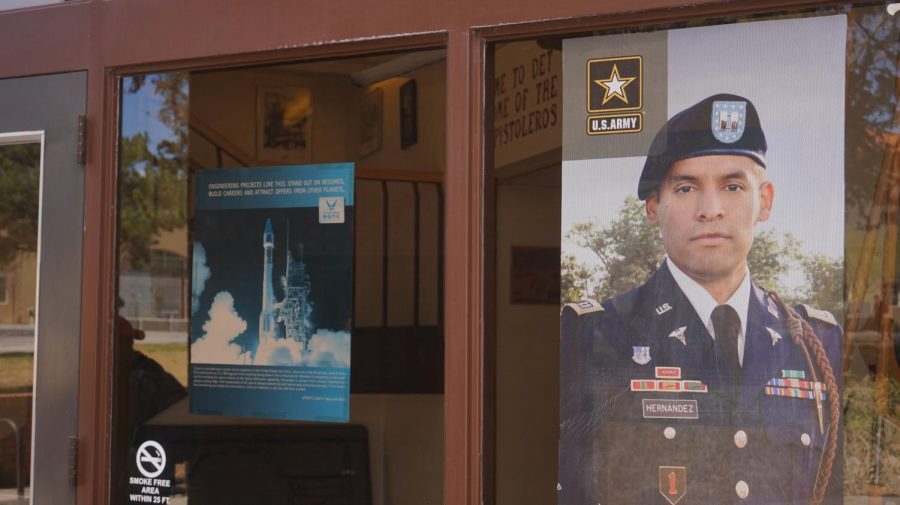Cadets on campus
The Air Force and Army ROTC units at NMSU are amongst some of the best programs in the country.
Rules, regulations and many early mornings are everyday routine for Reserve Officer Training Corps cadets at New Mexico State University.
NMSU was created as a land-grant university in 1888, on land donated by the Morrill Land-Grant Act of 1862. The Act donated public land to the several states and territories, so they may establish colleges focusing on agriculture and mechanical arts using the proceeds of federal land sales.
The Act also required the university to provide education in military tactics, thus establishing the Department of Military Science and Tactics. The Act also requires there to be ROTC detachments at the university.
NMSU currently has two detachments: Air Force and Army.
ROTC is one of the three ways to commission as an officer in the military and provides more officers than attending one of the service academies or Officer Training School.
Captain Evin Greensfelder, the Operation Flight Commander for Air Force ROTC Detachment 505 and Assistant Professor of Aerospace Studies at NMSU, said that ROTC is the largest officer commissioning source in the military.
“We produce the most officers just because we are located at different universities around the country,” Greensfelder, who commissioned through AFROTC at James Madison University, said.
A common misconception that follows the ROTC program, is that cadets must serve in the military when in fact, unless they are on an ROTC scholarship, they don’t have to serve at all.
According to the Army ROTC and AFROTC website, underclassmen in the program are under no commitment to serve in the military until they sign their contract of commitment at the start of their junior year.
When ROTC cadets graduate, they become Second Lieutenants in the military. However, it is a rigorous process.
Cadets must meet physical, fitness and academic standards in order to remain in the program and must go through a “boot camp” in the summer.
Physical Training is mandatory two to three days a week at 6 a.m. and uniforms must be worn on the specified days.
In addition, cadets take classes on the structure and history of their military branch.
LTC George W. Childs, Senior Assistant Professor of Military Science and one of the instructors for Army ROTC cadets, said that cadets are taught basic military customs and courtesies, team leadership, squad leadership and other military specific skills in classes.
Along with regular class, ROTC cadets also have a laboratory portion where they go over drill among other discipline and leadership exercises.
While ROTC is a great way to start a career in the military, it is also a great way to make new friends.
Rachel Weatherby Vega, an AFROTC cadet in her third year, said that ROTC really helped her branch out and meet new people as an out-of-state student from Colorado
“ROTC is like an extended family,” Vega, who is also an ASNMSU senator for the College of Health and Social Services, said. “ROTC is a great opportunity for a student to get into a close community of people with a similar goal.”
Vega said that participating in ROTC has had a positive impact on her life.
“I would highly recommend new students just to try it because it does empower you,” Vega said.

Ch'Ree Essary, entering her third year at The Round Up, currently serves as the publication's Managing Editor. The Eastern New Mexico native is a senior...

